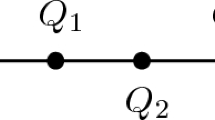Is The God a mathematician?
M. Livio, The Golden Ratio
Mathematics is the language that all exact sciences use.
N.I. Lobachevsky
Abstract
We consider a three-color cellular automaton (CA) that acts on a square lattice. In ternary numeral system, the CA has the number 111010011111110111011102010, which corresponds to 3704707887996 in the decimal system. With the finite size of the input row, CA-3704707887996 generates aperiodic structures with repeating self-similar patterns. In order to investigate the formation of periodic patterns by the CA-3704707887996, the input row was used that represents a periodic structure containing variable number of cells. The behavior of the CA-3704707887996 work for the input rows with periods up to 21 cells was studied. All generated patterns were analyzed from the viewpoint of their periodicity along the vertical direction. It was found out that the behavior of the system depending upon the length (l input) and structure of the periodic input row is strongly nonlinear. The complexity C of a pattern considered as a size of a unit cell increases exponentially with the increasing l input value and can be described by the function C = 1.8986 exp [0.3334 l input], with the correlation coefficient R 2 = 0.8967. As a rule, initially the CA generates a metastable aperiodic structure and then adopts a stable regime of generation of a stable periodic pattern. The abstract properties of the CA-3704707887996 have several important consequences for structural chemistry: (1) relatively simple schemes of local interactions of particles may result in the formation of very complex structures depending upon the initial conditions and abstract properties of the interactions; (2) symbolic complexity of the generated patterns increases exponentially depending upon the structure of initial conditions; (3) under certain initial conditions, explosive fluctuations of complexity are possible that lead to the formation of giant superstructures with extremely large periods; and (4) under certain conditions, the border between aperiodic and periodic structures virtually disappears.





Similar content being viewed by others
References
Pauling L (1939) The nature of the chemical bond. Cornell University Press, Ithaka, New York
Mackay AL (1981) De nive quinquangula - on the pentagonal snowflake. Sov Phys Crystallogr 26:910–919
Weinstein BK (1979) Modern Crystallography, vol 1. Moscow, Nauka (in Russian)
Eliseev EN, Sachkov YuV, Belov NV (1982) The flows of ideas and the regularities in the development of natural sciences. Leningrad, Nauka (in Russian)
Borisov SV, Magarill SA, Pervukhina NV (2012) Crystallographic analysis of atomic structures and the phenomenological mechanism of crystallization. J Struct Chem 53(Suppl 1):55–62
Shevchenko VY, Krivovichev SV (2008) Where are genes in paulingite? Mathematical principles of formation of inorganic materials on the atomic level. Struct Chem 19:571–577
Shevchenko VY, Krivovichev SV, Mackay AL (2010) Cellular automata and local order in the structural chemistry of the lovozerite group minerals. Glass Phys Chem 36:1–9
Shevchenko VY, Krivovichev SV, Tananaev IG, Myasoedov BF (2013) Cellular automata as models of inorganic structures self-assembly. Glass Phys Chem 39:1–10
Mackay AL (1976) Crystal symmetry. Phys Bull 1976:495–497
Mackay AL (1984) Descriptors for complex inorganic structures. Croat Chem Acta 57:725–736
Mackay AL (1986) Generalised crystallography. Comp Math Appl 12B:21–37
Mackay AL (1995) Generalised crystallography. J Mol Struct (Theochem) 336:293–303
Mackay AL (2002) Generalized crystallography. Struct Chem 13:217–222
Weber T, Dshemuchadse J, Kobas M, Conrad M, Harbrecht B, Steurer W (2009) Large, larger, largest—a family of cluster-based tantalum copper aluminides with giant unit cells. I. Structure solution and refinement. Acta Crystallogr B65:308–317
Conrad M, Harbrecht B, Weber T, Jung DY, Steurer W (2009) Large, larger, largest—a family of cluster-based tantalum copper aluminides with giant unit cells. II. The cluster structure. Acta Crystallogr B65:318–325
Krivovichev SV (2014) Which inorganic structures are the most complex? Angew Chem Int Ed 53:654–661
Krivovichev SV (2004) Crystal structures and cellular automata. Acta Crystallogr A 60:257–262
Toffoli T, Margolus N (1987) Cellular automata machines. MIT Press, Boston
Ilachinski A (2001) Cellular automata: a discrete universe. World Scientific, Singapore
Wolfram S (2002) A new kind of science. Wolfram Media Inc, Urbana
Steurer W (2011) Measures of complexity. Acta Crystallogr A67:C184
Krivovichev SV (2013) Structural complexity of minerals: information storage and processing in the mineral world. Miner Mag 77:275–326
Acknowledgments
We are grateful to anonymous reviewer for the insightful and detailed comments on the manuscript and to Alan L. Mackay for many years of inspirational scientific discussions.
Author information
Authors and Affiliations
Corresponding author
Additional information
Dedicated to A.L. Mackay on the occasion of his 90th birthday.
Parts of this article are based upon the ideas expressed by Alan L. Mackay in private correspondence to VYaS.
Rights and permissions
About this article
Cite this article
Shevchenko, V.Y., Krivovichev, S.V. Are periodicity and symmetry the properties of a discrete space? (On one paradox of cellular automata). Struct Chem 28, 45–50 (2017). https://doi.org/10.1007/s11224-016-0844-4
Received:
Accepted:
Published:
Issue Date:
DOI: https://doi.org/10.1007/s11224-016-0844-4




